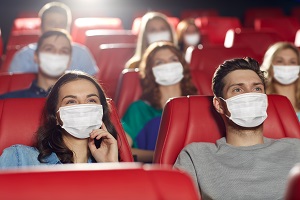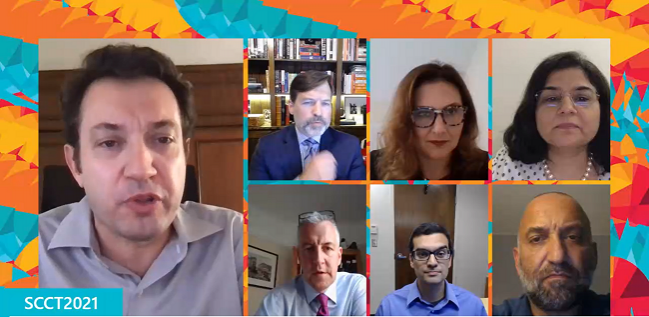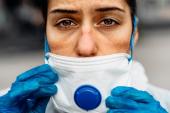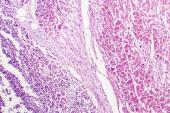COVID-19: TCTMD’s Daily Dispatch for July Week 4
We’re curating a list of COVID-19 research and other useful content, and updating it regularly.

Since March 2020, TCTMD reporter Todd Neale has been writing up breaking news and peer-reviewed research related to COVID-19 every weekday. In July 2021, we transitioned to Mondays, Wednesdays, and Fridays. If you have something to share, tell us. All of our COVID-19 coverage can be found on our COVID-19 Hub.
July 30, 2021
 A study of 39 breakthrough infections that occurred among 1,497 fully vaccinated healthcare workers in Israel indicates that cases correlated with levels of neutralizing antibody titres during the peri-infection period, with infections occurring in workers whose antibody titres were lower than matched uninfected controls. “Most breakthrough infections were mild or asymptomatic, although persistent symptoms did occur,” investigators write in the New England Journal of Medicine.
A study of 39 breakthrough infections that occurred among 1,497 fully vaccinated healthcare workers in Israel indicates that cases correlated with levels of neutralizing antibody titres during the peri-infection period, with infections occurring in workers whose antibody titres were lower than matched uninfected controls. “Most breakthrough infections were mild or asymptomatic, although persistent symptoms did occur,” investigators write in the New England Journal of Medicine.
Israel announced yesterday that it would be offering a third booster shot to people over age 60 who have already been double vaccinated. “The announcement by Naftali Bennett makes Israel, which launched one of the world’s most successful vaccination drives earlier this year, the first country to offer a third dose of a Western vaccine to its citizens on a wide scale.,” AP reports.
The Israeli study is not the only worrisome news on breakthrough infections, however. Researchers with the US Centers for Disease Control and Prevention (CDC) warned today that the Delta variant was responsible for a burst of 469 cases following Fourth of July festivities in homes, restaurants, and bars in a town in Barnstable County, MA. More than three-quarters of those infected had been fully vaccinated more than 2 weeks prior. Of the 274 vaccinated patients who had a breakthrough infection, 79% were symptomatic and four ended up in hospital, investigators write in Morbidity and Mortality Weekly Report. An internal agency document pertaining to the outbreak, obtained by the New York Times, “raised even more harrowing questions about the virus and its trajectory,” writes Apoorva Mandavilli. “The CDC’s internal document sounded a significantly more alarmed note, advocating for universal masking—for everyone, whatever the local transmission levels—and recommending that the agency ‘acknowledge the war has changed.’”
 On Friday, a broad swath of cardiovascular societies issued a joint statement supporting mandatory COVID-19 vaccinations for healthcare workers. Signatories include the American College of Cardiology, American Society of Echocardiography, American Society of Nuclear Cardiology, Association of Black Cardiologists, Heart Failure Society of America, Heart Rhythm Society, Society for Cardiovascular Angiography and Interventions, Society for Cardiovascular Magnetic Resonance, Society of Cardiovascular Computed Tomography, and Society of Thoracic Surgeons. “The data is clear that the COVID-19 vaccine's benefits far outweigh any risks and that it is our best tool to end this pandemic, but many, including many health care workers, have made the choice to not get vaccinated,” they write.
On Friday, a broad swath of cardiovascular societies issued a joint statement supporting mandatory COVID-19 vaccinations for healthcare workers. Signatories include the American College of Cardiology, American Society of Echocardiography, American Society of Nuclear Cardiology, Association of Black Cardiologists, Heart Failure Society of America, Heart Rhythm Society, Society for Cardiovascular Angiography and Interventions, Society for Cardiovascular Magnetic Resonance, Society of Cardiovascular Computed Tomography, and Society of Thoracic Surgeons. “The data is clear that the COVID-19 vaccine's benefits far outweigh any risks and that it is our best tool to end this pandemic, but many, including many health care workers, have made the choice to not get vaccinated,” they write.
In a viewpoint in the Annals of Internal Medicine, Ezekiel J. Emanuel, MD, PhD, and David J. Skorton, MD, make the case for mandatory COVID-19 vaccinations in healthcare workers. Rationales include a broad ethical duty to protect others, a specific professional duty to patients and families, and the fact that mandatory vaccines represent “merely an extension of well-established practices and policies, including the requirement that workers be vaccinated against influenza, hepatitis B, and other infectious diseases,” they note.
Researchers writing in the Lancet say that rates of acute MI and ischemic stroke following COVID-19 infection among 86,742 patients were significantly higher than those seen among matched controls. Rates of both spiked in the first week of infection, particularly when the day of infection was included in the analysis, and remained elevated for the next few weeks, the authors report. “This indicates that acute myocardial infarction and ischemic stroke represent a part of the clinical picture of COVID-19, and highlights the need for vaccination against COVID-19.”
Also in the Lancet, researchers reviewing a global safety database have put a number to the incidence of thrombosis with thrombocytopenia syndrome (TTS) following a second dose of the AstraZeneca/Oxford vaccine (AZD1222 [ChAdOx nCoV-19]). The vast majority of these rare side effects have been seen following first doses. Based on weekly data being collected in Europe and the United Kingdom, researchers estimate that the risk of TTS within 14 days of a first dose is 8.1 per million vaccinees. By contrast, the 14-day rate following the second dose is in the range of 2.3 per million vaccinees, they say.
A review paper published in the BMJ earlier this week sums up the long-term effects of COVID-19 among hospitalized and nonhospitalized patients, covering persistence as well as what’s known about risk factors for long-lasting symptoms and what therapies might help.
The US Food and Drug Administration (FDA) has expanded the emergency use authorization for baricitinib (Olumiant; Eli Lilly and Company) permitting it to be used as a stand-alone medication in hospitalized adults and pediatric patients 2 years of age or older requiring supplemental oxygen, noninvasive or invasive mechanical ventilation, or extracorporeal membrane oxygenation (ECMO). It had earlier been authorized for use in combination with remdesivir (Veklury; Gilead).
Preliminary findings from a 25-nation consortium indicate that cognitive impairment and “forgetfulness” following SARS-CoV-2 infection correlates with persistent anosmia, but not necessarily with the severity of the original infection. The data was presented at the Alzheimer’s Association International Conference.
The European Medicines Agency (EMA) announced today that it has approved “a scale-up of the active substance production process at Moderna's COVID-19 vaccine manufacturing sites in the United States. This recommendation is expected to have significant impact on the supply of Spikevax, the COVID-19 vaccine developed by Moderna, in the European Union.” By the third quarter of 2021, a press release notes, the US supply chain is expected to provide 40 million doses of vaccine earmarked for the European market.
 Never mind mandatory jabs for healthcare workers: Broadway audiences will need to mask up and provide proof of vaccination if they want to take in a show.
Never mind mandatory jabs for healthcare workers: Broadway audiences will need to mask up and provide proof of vaccination if they want to take in a show.
TCTMD Managing Editor Shelley Wood contributed today’s Dispatch.
July 28, 2021
The US Centers for Disease Control and Prevention (CDC) has issued new guidance recommending that communities and organizations update their COVID-19 prevention strategies—including indoor mask use, where warranted—according to parameters present in their areas. These include the rate of community transmission, the capacity of their health systems, the degree of vaccination coverage, their ability to swiftly respond to new infections and spread, and the proportion of the population at risk. “Prevention strategies should only be relaxed or lifted after several weeks of continuous sustained improvement in the level of community transmission,” members of the CDC’s COVID-19 Response Team write in Morbidity and Mortality Weekly Report. “In areas with low or no SARS-CoV-2 transmission and with testing capacity in place to detect early introduction or increases in spread of the virus, layered prevention strategies might be removed one at a time while monitoring closely for any evidence that COVID-19 cases are increasing.”
 As the New York Times reports, however, the response to the CDC’s nonbinding guidance has been swift—and varied. “Officials in Illinois and Nevada said they would follow the guidance, asking residents to wear masks in indoor public spaces, regardless of vaccination status,” whereas Republican governors in Texas and Arizona have already “signaled their opposition.” The US House of Representatives will once again require lawmakers and staff to wear masks inside. Senators are encouraged, but not required, to do so.
As the New York Times reports, however, the response to the CDC’s nonbinding guidance has been swift—and varied. “Officials in Illinois and Nevada said they would follow the guidance, asking residents to wear masks in indoor public spaces, regardless of vaccination status,” whereas Republican governors in Texas and Arizona have already “signaled their opposition.” The US House of Representatives will once again require lawmakers and staff to wear masks inside. Senators are encouraged, but not required, to do so.
Tokyo is under its fourth state of emergency since the pandemic began and today recorded 3,177 new COVID-19 cases, setting a daily record for the second day in a row. The spike, attributed to visiting athletes and spectators, as well as lapsed social distancing at the Olympic Games, is putting pressure on hospitals, Reuters reports. “Nationwide, the number of new COVID-19 cases exceeded 9,000 for the first time.”
Fully functional CD8+ T cells are detectable within 10 to 12 days following a first dose of an mRNA vaccine, suggesting that these may be the primary mediators of protection in the earliest weeks after vaccination, researchers report in Nature today. “Our results indicate that CD8+ T cells are important effector cells, expanded in the early protection window after prime vaccination, precede maturation of other effector arms of vaccine-induced immunity, and are stably maintained after boost vaccination.”
Chinese investigators writing in the Lancet Infectious Diseases say results of a five-arm, phase 1 trial of the Ad5-nCoV vaccine, delivered by aerosol inhalation, support the success and safety of this approach as compared with intramuscular jabs, or a mixed muscle/inhalation delivery. “Two doses of aerosolized Ad5-nCoV elicited neutralizing antibody responses, similar to one dose of intramuscular injection. An aerosolized booster vaccination at 28 days after first intramuscular injection induced strong IgG and neutralizing antibody responses,” they write.
 From the start of the pandemic, healthcare workers have been at a higher risk of COVID-19 infection, but how infections are occurring remains a moving target. In a recent cohort study of 801 hospital workers at two facilities in the Netherlands, investigators found that risk of infection was four times higher for healthcare workers interacting with patients than for those not involved in direct patient care, but that the transmissions were typically happening from worker to worker. Not a single transmission was identified from patient to worker, they write in JAMA Network Open. Crowded break rooms, in-person conferencing, and inadequate mask use might have played a role in the spread, say the authors.
From the start of the pandemic, healthcare workers have been at a higher risk of COVID-19 infection, but how infections are occurring remains a moving target. In a recent cohort study of 801 hospital workers at two facilities in the Netherlands, investigators found that risk of infection was four times higher for healthcare workers interacting with patients than for those not involved in direct patient care, but that the transmissions were typically happening from worker to worker. Not a single transmission was identified from patient to worker, they write in JAMA Network Open. Crowded break rooms, in-person conferencing, and inadequate mask use might have played a role in the spread, say the authors.
A JAMA news story reviews the potential uses for “über-antibodies” from a select group of patients who recovered from COVID-19 that demonstrate a particularly marked response against 23 different COVID-19 variants, “including the highly transmissible B.1.1.7 (Alpha), B.1.351 (Beta), and B.1.617.2 (Delta) versions,” writes Jennifer Abbasi. Not only could the donated samples help with the development of antibody therapies, but they also offer clues to which spike protein regions are “highly conserved” across variants, moving researchers one step closer to identifying a universal SARS-CoV-2 vaccine.
Doxycycline in patients with suspected COVID-19 at high risk of adverse outcomes did not reduce time to recovery, hospital admissions, or deaths related to COVID-19 “and should not be used as a routine treatment for COVID-19,” the PRINCIPLE randomized clinical trial investigators report in the Lancet Respiratory Medicine.
Several recent studies have documented the dip in life expectancy attributed to COVID-19; now one researcher at the University of California, Los Angeles, is proposing a new metric that better reflects the “shock” to mortality rates that a natural disaster or pandemic delivers. Dubbing his new indicator the “mean unfulfilled life span” or MUL, Patrick Heuveline estimated that MUL, as a measure of COVID-19’s impact, peaked at 8.91 years in New Jersey, but at 12.7 years in part of Ecuador for the entire month of April 2020. The paper was published yesterday in PLOS ONE.
 While enormous swaths of the world are still awaiting vaccinations, Pfizer has updated its revenue forecasts for 2021 to $33.4 billion, up from an expected $26 billion. The German company, which splits vaccine revenues with BioNTech, says direct vaccine revenues in the second quarter of 2021 were $7.8 billion, the Financial Times reports.
While enormous swaths of the world are still awaiting vaccinations, Pfizer has updated its revenue forecasts for 2021 to $33.4 billion, up from an expected $26 billion. The German company, which splits vaccine revenues with BioNTech, says direct vaccine revenues in the second quarter of 2021 were $7.8 billion, the Financial Times reports.
TCTMD Managing Editor Shelley Wood contributed today’s Dispatch.
July 26, 2021
Around the world, different cities and countries are wrestling with mandatory vaccination decisions, as the New York Times reports. France, where just 60% of citizens have received their first shot, has required paper or digital “health passes” for a range of indoor venues, even as 160,000 people protested the legislation this weekend. Germany is mulling the need for reinstating restrictions to places like restaurants, theatres, and stadiums for people who are unvaccinated. In the US, the American Medical Association and the American Nurses Association are among the many health organizations to issue a joint statement calling on all healthcare and long-term care employers to require that their employees be vaccinated.
COVID-19 infections are up nearly 50% from last week in the United States based on 7-day case averages, Becker’s Hospital Review reports. But that weekly average is down 84% from the pandemic’s peak, back in early January 2021.
Still, hospitalizations “are now catching up with surging COVID-19 case counts in parts of the country where COVID-19 vaccinations are low,” notes CIDRAP, pointing to a New York Times story with the troubling observation that Florida hospitals are admitting their highest number of COVID-19-positive cases since the pandemic’s start.
If only 70% of US citizens get vaccinated and the Delta variant becomes 60% more transmissible, then the current rise in cases could lead to a daily peak of 60,000 COVID-19 cases and 850 deaths each day by mid-October, new modelling suggests. “What's going on in the country with the virus is matching our most pessimistic scenarios," Justin Lessler, PhD, told USA Today. “We might be seeing synergistic effects of people becoming less cautious in addition to the impacts of the Delta variant.”
I still cannot understand why intranasal vaccines have not been given top priority, given their remarkable allure to block Covid transmission; an excellent explainer for why and status @ScienceMagazine https://t.co/2T3cFElaXY
— Eric Topol (@EricTopol) July 26, 2021
w/@ScienceVisuals pic.twitter.com/6VHG90kbc8
A viewpoint in Science is making a fresh case for shots in the nose. “Advantages of intranasal vaccines include needle-free administration, delivery of antigen to the site of infection, and the elicitation of mucosal immunity in the respiratory tract,” write Frances E. Lund, PhD, and Troy D. Randall, PhD. “Given the respiratory tropism of the virus . . . it seems surprising that only seven of the nearly 100 SARS-CoV-2 vaccines currently in clinical trials are delivered intranasally.”
Meanwhile, as countries start to tally their medal count at the Tokyo Olympics, the number of COVID-19 cases also is ticking higher. “At least 153 people with Olympic credentials, including 19 athletes, have tested positive,” the New York Times reports. The average number of cases in Japan more broadly has spiked more than 100% over the past 2 weeks.
“We’re going in the wrong direction,” Anthony Fauci, MD, told CNN's Jake Tapper. And yes, Fauci says he’s “frustrated” by the “unnecessary predicament we are putting ourselves in,” referring to the 50% of US citizens who remain not fully vaccinated.
A research letter in JAMA Internal Medicine reviews the safety of second mRNA vaccine doses among people who had an allergic reaction to their first dose—a phenomenon estimated to occur in as many as 2% of people inoculated with the Pfizer-BioNTech or Moderna vaccines. While the US Centers for Disease Control and Prevention (CDC) has said that people who have these reactions could get the single-dose J&J/Janssen vaccine for their second jab, “our data suggest that most patients with immediate and potentially allergic reactions to mRNA COVID-19 vaccines tolerate a second dose,” researchers say. “It may not be necessary to consider this, to our knowledge, largely unstudied alternative mixed series approach.”
Coincidentally, Nature News & Views provides a summary of what’s known about the “mix and match” approach to SARS-CoV-2 vaccination. “Heterologous dosing with the adenovirus-based ChAdOx1 (AstraZeneca) vaccine followed by an mRNA vaccine induced stronger immune responses than did the homologous ChAdOx1 vaccine series, according to recent immunogenicity studies,” write Meagan E. Deming, MD, PhD, and Kirsten E. Lyke, MD. Whether other vaccine combinations or different dose order might deliver comparable efficacy is not discussed.
 The COVID-19 pandemic has greatly altered the practice of cardiovascular imaging, and while some trends may normalize, there will likely be lasting change, predicted an international panel of speakers at last week’s 2021 Society of Cardiovascular Computed Tomography (SCCT) virtual meeting. TCTMD’s Yael L. Maxwell recaps the discussion.
The COVID-19 pandemic has greatly altered the practice of cardiovascular imaging, and while some trends may normalize, there will likely be lasting change, predicted an international panel of speakers at last week’s 2021 Society of Cardiovascular Computed Tomography (SCCT) virtual meeting. TCTMD’s Yael L. Maxwell recaps the discussion.
It’s a question many parents may also be wondering: “Will Some Adolescents and Young Adults Forgo Adherence to COVID-19 Prevention Methods in Favor of Romantic Relationships?” That’s the title of a viewpoint in JAMA Pediatrics today, which proposes research to help inform the development of “youth-friendly, evidence-informed messaging” to help this age group navigate intimacy and relationships during the pandemic “and the transition to post-COVID-19 times.”
TCTMD Managing Editor Shelley Wood contributed today’s Dispatch.
Shelley Wood was the Editor-in-Chief of TCTMD and the Editorial Director at the Cardiovascular Research Foundation (CRF) from October 2015…
Read Full Bio





Comments